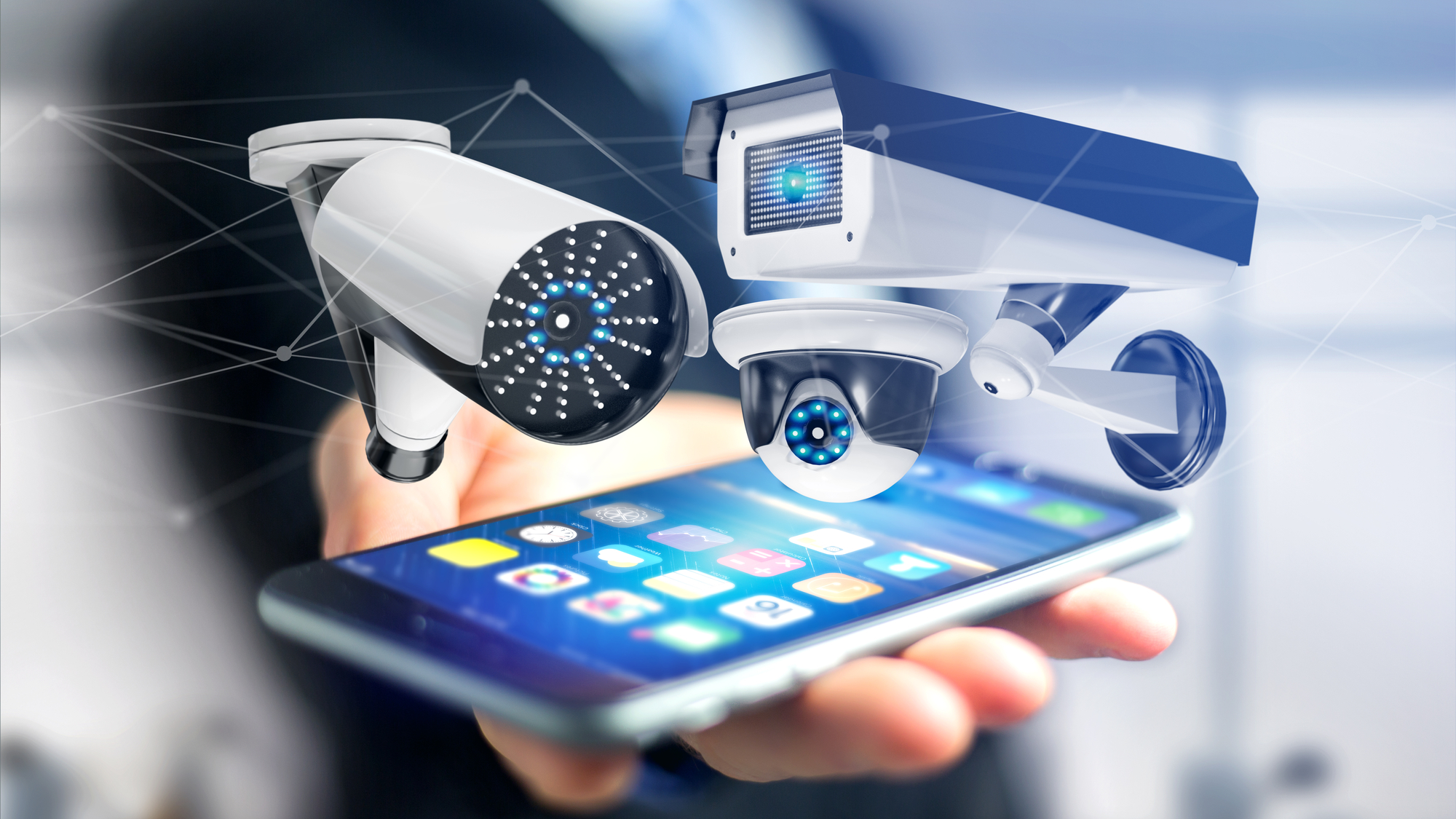Delve into the world of smart security cameras and discover how they play a crucial role in safeguarding home interiors. From deterring intruders to enhancing overall security, these devices offer a new level of protection for your living space.
Importance of Smart Security Cameras
Smart security cameras play a crucial role in protecting home interiors by providing advanced surveillance and monitoring capabilities. These cameras are equipped with cutting-edge technology that helps deter potential intruders and enhance overall home security.
Deterring Potential Intruders
- Smart security cameras act as a visible deterrent to potential intruders, discouraging them from attempting to break into a home.
- The presence of security cameras can make burglars think twice before targeting a property, as they are aware that their actions are being recorded.
- In the event of suspicious activity, smart security cameras can send real-time alerts to homeowners and authorities, enabling quick response and intervention.
Enhancing Overall Home Security
- Smart security cameras provide round-the-clock monitoring of home interiors, allowing homeowners to keep an eye on their property even when they are away.
- With features like motion detection and night vision, these cameras offer enhanced security measures to detect and capture any unauthorized access or suspicious behavior.
- Integration with smart home systems allows for seamless control and management of security cameras, providing added convenience and peace of mind to homeowners.
Features of Smart Security Cameras

Smart security cameras come packed with advanced features that enhance the security of home interiors. These features include motion detection, night vision, and integration with smart home systems.
Motion Detection
Smart security cameras are equipped with motion sensors that can detect any movement within their field of view. When motion is detected, the camera sends alerts to the homeowner's smartphone, allowing them to monitor the situation in real-time. This feature is crucial for detecting intruders or any suspicious activity inside the home.
Night Vision
Many smart security cameras come with infrared LEDs that enable night vision capabilities. This allows the cameras to capture clear footage even in low light or complete darkness. Night vision is essential for maintaining surveillance of the home during the night when visibility is limited.
Types of Smart Security Cameras
There are various types of smart security cameras available in the market, including indoor cameras, outdoor cameras, and doorbell cameras. Indoor cameras are designed to monitor the interior of the home, while outdoor cameras are weatherproof and can withstand outdoor conditions.
Doorbell cameras, on the other hand, provide surveillance of the front door and allow homeowners to communicate with visitors remotely.
Integration with Smart Home Systems
Smart security cameras can be integrated with smart home systems, such as voice assistants and smart hubs, for enhanced security. This integration allows homeowners to control their security cameras using voice commands or through a centralized smart home app. By integrating with other smart devices, smart security cameras can provide a comprehensive security solution for the home.
Installation and Placement Tips
Installing smart security cameras in your home is a crucial step in enhancing the safety and security of your living space. Here is a step-by-step guide to help you set up your smart security cameras effectively:
Step-by-Step Installation Guide
- Determine the best locations for your cameras based on the layout of your home and the areas you want to monitor.
- Ensure that the cameras are within range of your Wi-Fi network to ensure proper connectivity.
- Mount the cameras securely using the appropriate mounting hardware provided in the package.
- Connect the cameras to a power source and follow the manufacturer's instructions to set them up on your smartphone or computer.
- Adjust the camera angles and settings to cover the desired areas effectively.
- Test the cameras to ensure they are functioning properly and recording footage correctly.
Ideal Placement for Maximum Coverage
- Place cameras at entry points such as front and back doors, windows, and garage doors to monitor potential intruders.
- Install cameras in common areas like the living room, kitchen, and hallways to keep an eye on activities inside your home.
- Consider placing cameras at blind spots or areas with limited visibility to eliminate potential hiding spots for intruders.
- Ensure that cameras are mounted high enough to avoid tampering and provide a wider field of view.
Ensuring Proper Connectivity and Setup
- Position your Wi-Fi router closer to the cameras to improve signal strength and connectivity.
- Use a Wi-Fi extender or booster if necessary to enhance the range of your network for better camera performance.
- Follow the manufacturer's instructions carefully to set up the cameras on your smartphone or computer and ensure they are connected to the network.
- Regularly check the camera feed to make sure they are working correctly and adjust settings as needed.
Remote Monitoring and Alerts
Remote monitoring through mobile devices offers convenient access to your smart security cameras from anywhere, enhancing both convenience and security for homeowners.
Importance of Real-Time Alerts
Real-time alerts from smart security cameras are crucial for immediate action in case of any security threats. These alerts notify homeowners instantly, allowing them to respond promptly and potentially prevent any security breaches.
Examples of Remote Monitoring in Action
- One homeowner received an alert on their mobile phone while at work, indicating motion detected in their living room. By accessing the camera feed remotely, they were able to see an intruder attempting to break in and immediately contacted the authorities, preventing a potential burglary.
- Another homeowner received a notification of a fire alarm triggered by their smart security camera while they were away on vacation. They were able to view the live feed, confirming a fire had broken out, and contacted the fire department in time to prevent significant damage to their property.
End of Discussion

As we wrap up our discussion on smart security cameras, it's clear that these innovative devices are essential for modern home protection. With features like remote monitoring and real-time alerts, they provide peace of mind and security like never before.
Questions and Answers
How do smart security cameras deter potential intruders?
Smart security cameras with motion detection and night vision capabilities can detect any suspicious activity, alerting homeowners and deterring intruders from entering the premises.
Can smart security cameras integrate with smart home systems?
Yes, smart security cameras can seamlessly integrate with smart home systems, allowing for enhanced security features and centralized control through a single platform.
What is the ideal placement for smart security cameras?
Smart security cameras should be strategically placed at entry points, windows, and areas with valuable belongings to ensure maximum coverage and surveillance of the home.



